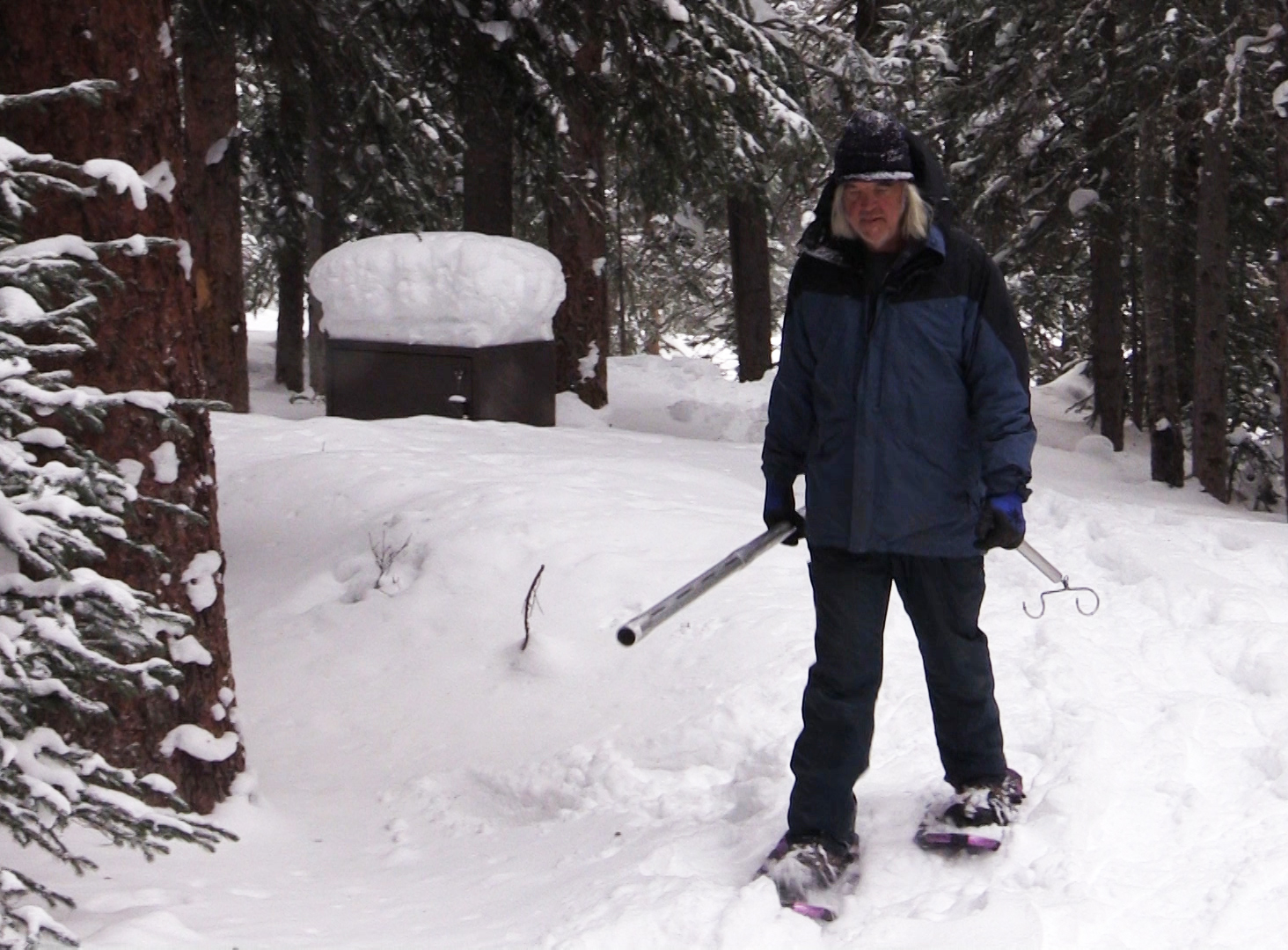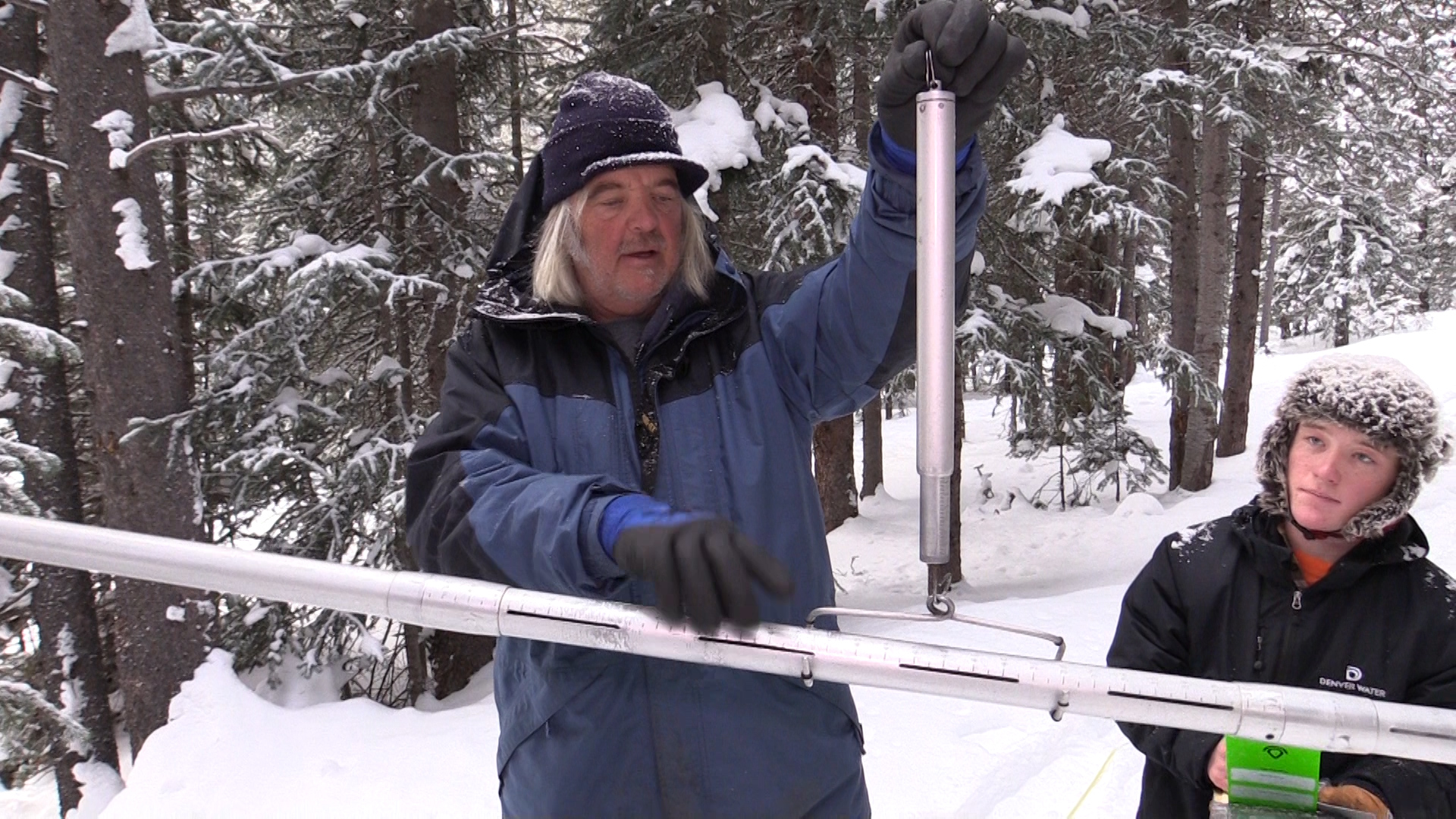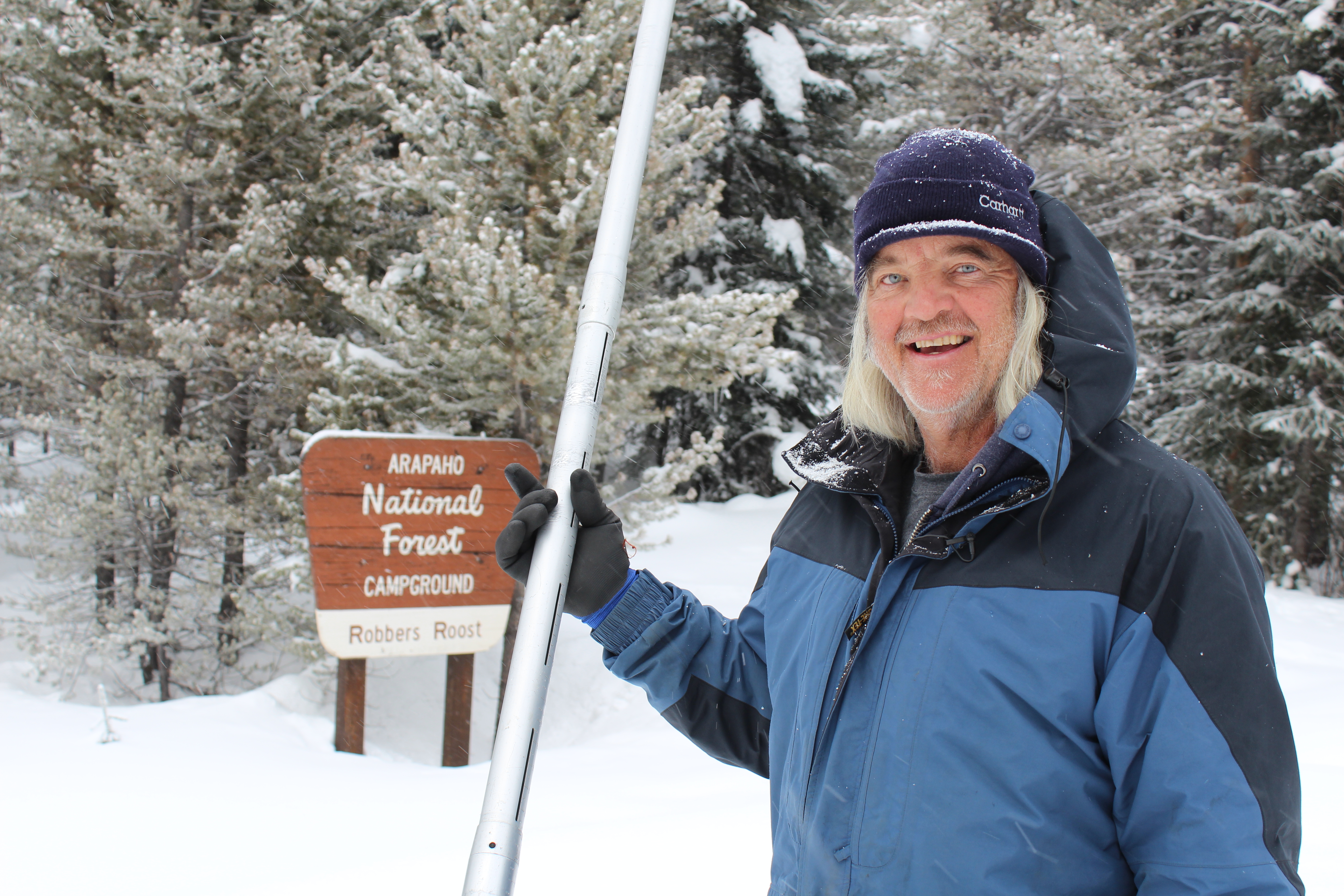
Why Denver Water loves snow
Editors note: This story was originally published in 2016 and has been updated to reflect current snow conditions as of March 4, 2019, following the weekend’s big snowstorms.
What’s good for skiers is good for reservoirs. If you’ve already hit a few powder days on the slopes this year, you know the winter is off to a snowy start in the mountains.
As of Monday, March 4, the amount of snow in the Colorado and South Platte river basins stood at 123 percent and 119 percent of normal, respectively, for this time of year, according to the Natural Resources Conservation Service.
In the area of the Colorado River basin that lies above Denver Water's collection system, the snowpack was at 141 percent of normal on March 4, according to measurements.
This is good news for Denver Water, as the mountain snow in these two river basins is the primary source of our drinking water supply.
Keeping track of how much snow is in the mountains is a team effort.
From January through May, our crews make a monthly trek into the wilderness and measure snow at 11 locations in Grand, Park and Summit counties. They hike, snowshoe, cross-country ski and ride in snowcats to reach our snow-measuring sites.
“It’s fun to see how much snow we are going to get every year,” said Per Olsson, the former caretaker at Jones Pass. Olsson measured snow at Denver Water for 26 years, including several locations in Grand County, until his retirement in 2018. “We’re hope for a lot of snow every year.”
In late January 2016, Olsson and Conor Peters, a facility operator in Winter Park, joined by a video crew, strapped on snowshoes and trudged through the forest for a monthly check of the snowpack at the base of Berthoud Pass near Winter Park.
Measuring snow requires more than just checking how much is on the ground. Olsson and Peters used a special tube to measure the depth and weight of the snow at seven locations on the Berthoud Pass snow-measuring site.
The courses provide water planners with eyes-on-the-ground information to compare the current winter's numbers with snowpack levels dating back to 1936.
They use that information to determine the snow-water equivalent: a calculation of how much water is packed into the snow.
“A general rule of thumb is that 12 inches of snow equals about 1 inch of water when it melts,” said Nathan Elder, Denver Water's manager of water supply.
Denver Water also uses information collected by the Conservation Service’s automated snowpack telemetry weather stations, known as SNOTEL sites. The network of stations was established in 1979 and provides real-time snow information at locations across Colorado and the western U.S.
The manual and automated readings provide Denver Water’s planners with a picture of how much and what type of snow is in the mountains. They use the information to make predictions about how much water will end up in Denver Water’s reservoirs during the spring runoff.
Despite the strong start to the winter, planners don’t make early assumptions.
“This year is looking good so far,” Elder said. “We like to see snow any time of year, but March, April and May are our snowiest and wettest months.”
Elder said it takes patience to see how the snowpack develops.
“We don’t want to make any decisions about our supply this early,” he said. “We’ve still got a ways to go this winter and even though we are above normal now, weather conditions can change quickly.”



